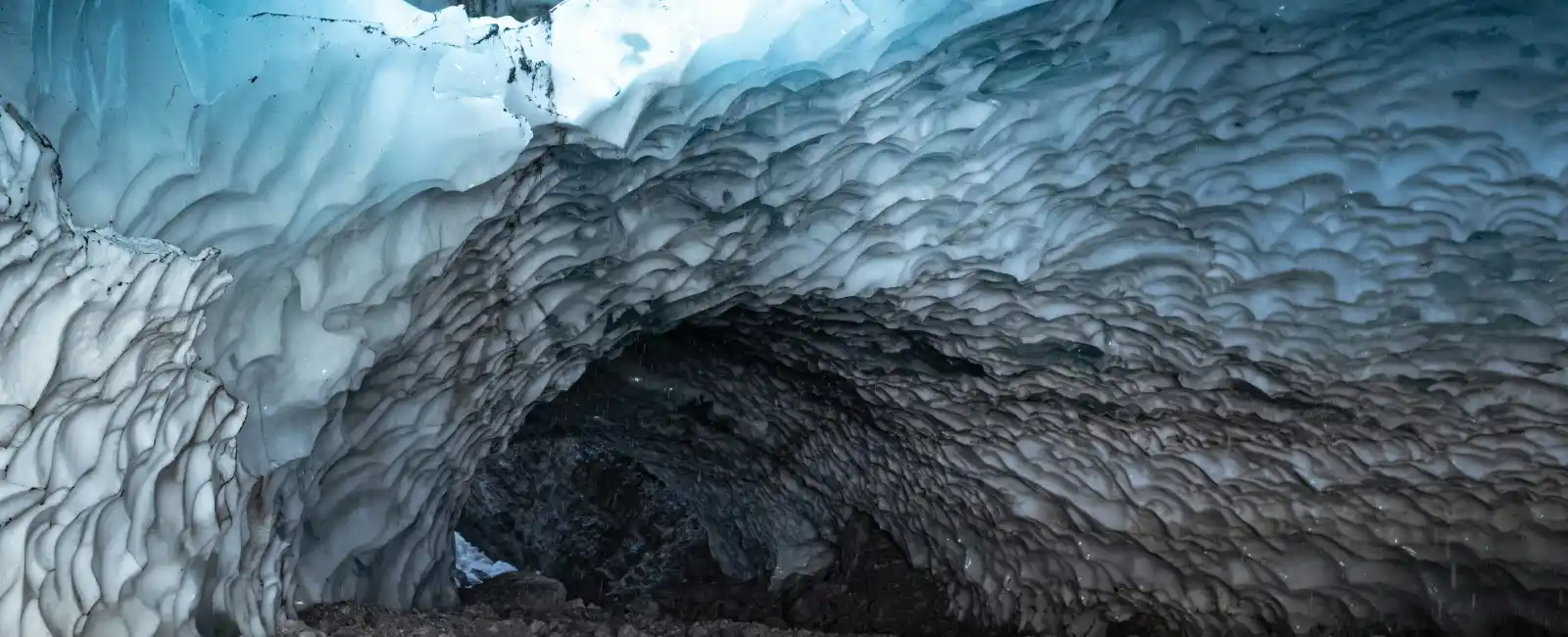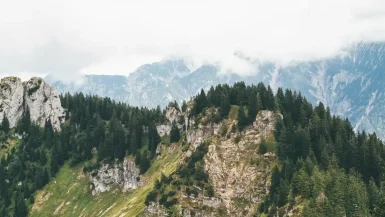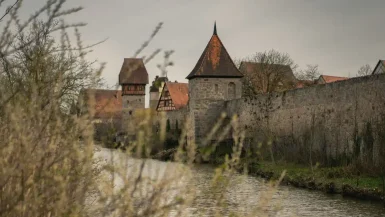Bavaria, known for its picturesque landscapes and iconic castles, holds secrets below ground. Adventurers can explore Bavaria’s underground caves, which offer a glimpse into a fascinating world shaped by water and time. The region’s subterranean wonders range from intricate stalactite formations to ancient ice caves. Whether you’re an experienced spelunker or a curious traveler, Bavaria’s caves offer unforgettable experiences. In this guide, we’ll dive deep into the must-visit caves, safety tips, and the stunning beauty that lies beneath Bavaria’s mountains.
Why Exploring Bavaria’s Underground Caves Should Top Your Travel List
Exploring Bavaria’s underground caves provides an unparalleled opportunity to see unique geological formations up close. These caves allow you to travel back in time, viewing natural sculptures shaped over millions of years. Some of Bavaria’s caves remain relatively unknown to tourists, which means you can enjoy a peaceful and awe-inspiring experience away from the crowds. Additionally, many caves are accessible year-round, making them a perfect all-weather destination.
Top Underground Caves to Explore in Bavaria
Bavaria boasts several stunning underground caves, each offering something unique. From the eerie glow of ice caves to the mystery of limestone formations, there’s something for everyone.
1. Schellenberg Ice Cave: A Frozen Marvel
Located in the Berchtesgaden Alps, the Schellenberg Ice Cave is Bavaria’s largest accessible ice cave. As you explore this frozen wonder, you’ll encounter massive ice walls, shimmering ceilings, and frozen waterfalls. The cave’s formations change with the seasons, ensuring that no two visits are alike. Exploring this ice cave offers a rare opportunity to experience the beauty of frozen nature in a controlled environment.
Due to the constant low temperatures, the ice inside remains preserved throughout the year, creating an otherworldly atmosphere. Guided tours take you deep into the cave, where expert guides share fascinating insights about its formation and history. The shimmering ice formations are illuminated by soft lighting, enhancing the magical ambiance as you move deeper into the cave. Sturdy footwear and warm clothing are essential since the temperature inside the cave can be much colder than outside, even in summer. The accessibility of the Schellenberg Ice Cave makes it an excellent destination for families, offering both an educational and thrilling experience. Visitors often find themselves awestruck by the sheer scale and beauty of the frozen landscape.
Furthermore, the surrounding Berchtesgaden Alps provide breathtaking views, making the journey to the cave just as rewarding as the exploration itself. A visit to the Schellenberg Ice Cave is a must for anyone looking to combine adventure with natural beauty in Bavaria.
2. Devil’s Cave (Teufelshöhle): A Journey Into the Depths
The Devil’s Cave, near Pottenstein, is one of Bavaria’s most famous limestone caves. The cavern features impressive stalactites and stalagmites, illuminated to showcase their intricate details. Visitors can take guided tours deep into the cave, learning about its formation and the legends that surround it. According to local lore, the cave’s name comes from the belief that it was once inhabited by the devil himself.
The intricate formations within the cave are the result of thousands of years of water slowly dripping through the limestone, creating mesmerizing natural sculptures. As you explore deeper, the cool, damp air and the echoing sounds of water dripping heighten the cave’s mysterious ambiance. Many visitors are particularly struck by the eerie silence that permeates the depths of the cavern, amplifying the sense of otherworldliness. The tour also highlights sections of the cave where prehistoric human artifacts have been discovered, adding a historical layer to the experience. A few areas of the cave are believed to have served as ancient shelters for early humans. During the colder months, the Devil’s Cave also becomes a haven for bats, which hibernate in the more secluded parts of the cave. Some believe that the bats further contribute to the cave’s ominous reputation, as their sudden appearance adds to the eerie atmosphere.
3. Wind Cave (Windloch): A Hidden Gem
Wind Cave’s quiet atmosphere makes it ideal for explorers seeking solitude in nature. As you venture deeper into its narrow passageways, you’ll be greeted by stunning formations that have developed over millennia. The winding tunnels create a sense of mystery, with every turn revealing new geological wonders. Unlike some of Bavaria’s more popular caves, Wind Cave offers a raw, uncommercialized caving experience. Guided tours are available for those who want to learn more about the cave’s formation and history. However, experienced spelunkers can also embark on self-guided tours, adding an extra layer of adventure. Despite its relatively unknown status, Wind Cave is home to unique species of cave-dwelling wildlife, making it a destination of both geological and ecological interest. The cave’s cool, damp climate provides a refreshing escape from the summer heat, making it an excellent year-round destination.
4. Bing Cave: A Historical Treasure
Bing Cave is also notable for its impressive chambers, which are large enough to accommodate groups without feeling cramped. The lighting throughout the cave enhances the beauty of its formations, casting dramatic shadows that bring the natural sculptures to life. Visitors will also appreciate the well-maintained walkways, making it accessible for children and older travelers. The knowledgeable guides are passionate about the cave’s history, offering intriguing stories about its discovery and the scientific importance of the area. For those interested in photography, the cave offers numerous photo opportunities, especially in areas where the stalactites and stalagmites are most intricate.
Beyond the main tour, Bing Cave often hosts educational workshops, giving visitors a chance to learn more about geology in a hands-on environment. The cave is open year-round, and special night tours are occasionally available, offering a different perspective of the underground beauty. Visiting Bing Cave is not just about seeing natural wonders—it’s also an educational experience that enhances your understanding of Bavaria’s geological history.
Geology of Bavaria’s Underground Caves
Bavaria’s underground caves are primarily formed through a process called karstification. This occurs when water dissolves soluble rocks like limestone, creating large cavities over thousands or even millions of years. Many of the caves feature striking formations like stalactites and stalagmites, which result from the slow dripping of mineral-rich water. Some caves, like the Schellenberg Ice Cave, feature frozen formations that have existed for centuries.
Exploring Bavaria’s underground caves gives you a firsthand look at the power of nature’s forces. The delicate balance of water, time, and mineral deposits creates formations that are both fragile and enduring.
The Wildlife Inside Bavaria’s Underground Caves
Bavaria’s underground caves are home to various species of bats, insects, and other small creatures that have adapted to life in the darkness. Bats often use the caves as hibernation spots during the winter months, while rare species of cave-dwelling insects thrive in the damp, cool environment. Exploring Bavaria’s underground caves allows you to witness this unique ecosystem up close.
One of the most exciting aspects of cave exploration is the chance to spot some of these elusive creatures. While most wildlife stays hidden from view, careful observers may catch glimpses of bats flitting through the darkness or rare beetles scurrying along the cave floor.
Planning Your Cave Exploration Adventure
Before you set out to explore Bavaria’s underground caves, it’s essential to plan accordingly. Preparation ensures that your cave experience remains safe and enjoyable.
1. Choose the Right Cave
Not all caves are suitable for everyone. Some caves offer easy, guided tours perfect for families and beginners, while others require more advanced spelunking skills. Researching each cave’s difficulty level before your visit will ensure you choose a cave that matches your experience and fitness level.
2. What to Bring
When exploring Bavaria’s underground caves, bring sturdy shoes with good grip, as cave floors can be slippery. A reliable flashlight or headlamp is essential, even if the cave offers lighting, as it helps you explore darker sections. Warm clothing is also recommended, especially in ice caves or those with a consistent, cool temperature.
3. Hire a Guide
Many of Bavaria’s caves offer guided tours, and it’s highly recommended to take advantage of these services. Guides provide invaluable insights into the cave’s history, geology, and wildlife. They also ensure your safety, helping you navigate challenging sections of the cave and avoid potential hazards.
4. Cave Etiquette
Caves are delicate ecosystems, and it’s crucial to follow cave etiquette during your visit. Avoid touching stalactites and stalagmites, as the oils from your skin can damage these formations. Also, refrain from disturbing any wildlife you encounter. Many of Bavaria’s caves are protected areas, and following the rules ensures they remain pristine for future generations.
Exploring Bavaria’s Underground Caves: Safety Tips
Cave exploration can be thrilling, but safety must always come first. Here are some essential tips for staying safe while exploring Bavaria’s underground caves:
1. Never Explore Alone
Always explore caves in groups or with a guide. Caves can be disorienting, and it’s easy to get lost without a companion or guide. Additionally, having others with you ensures that someone can call for help in case of an emergency.
2. Know the Weather
Before exploring any cave, check the weather forecast. Sudden rainstorms can cause flooding in some caves, particularly those with river systems. Avoid exploring caves during or after heavy rainfall.
3. Stay on Marked Paths
Most caves offer marked pathways for visitors. Staying on these paths ensures your safety and protects the cave’s fragile formations. Wandering off the path can lead to dangerous drops or damage to delicate cave structures.
4. Use Proper Equipment
Bring a flashlight or headlamp with extra batteries, as some caves can be quite dark, even if they are artificially lit. Wear sturdy, non-slip shoes, and consider bringing gloves if you plan to climb or scramble over rocks.
5. Know Your Limits
Cave exploration can be physically demanding. If you feel tired or unsure about a particular section, don’t hesitate to turn back. Pushing your limits in an unfamiliar environment can lead to accidents or injuries.
Seasonal Caving: When to Explore Bavaria’s Underground Caves
Bavaria’s underground caves offer year-round exploration opportunities, but certain caves are best visited during specific seasons.
1. Summer Caving
During the summer, caves like the Bing Cave or Devil’s Cave provide a cool escape from the heat. Many of Bavaria’s caves maintain a constant cool temperature, offering a refreshing respite. However, summer can also be a busy time for tourism, so plan to visit during off-peak hours if you prefer a quieter experience.
2. Winter Caving
Winter is the perfect time to explore Bavaria’s ice caves, like the Schellenberg Ice Cave. The ice formations are at their most impressive during this season, and the chilly temperatures enhance the frozen beauty of the cave. Be sure to dress warmly and check if any caves close due to snow or icy conditions.
3. Spring and Fall
Spring and fall are ideal times for cave exploration, as the mild temperatures make hiking to remote caves more comfortable. These seasons also offer fewer crowds, giving you more time and space to enjoy Bavaria’s underground wonders. However, check weather conditions, as heavy rains in spring can cause flooding in some caves.
Cultural and Historical Significance of Bavaria’s Underground Caves
Bavaria’s underground caves hold cultural and historical importance as well. Over centuries, they have been the site of local legends, religious ceremonies, and even human habitation. Some caves, like the Devil’s Cave, have ties to ancient myths and local folklore. Others have provided shelter and refuge during historical events, such as wars or natural disasters.
By exploring Bavaria’s underground caves, you’re not just witnessing geological marvels—you’re stepping into places that have shaped the region’s history and culture.
How to Get to Bavaria’s Best Caves
Reaching Bavaria’s caves is relatively easy, thanks to the region’s excellent transportation network. Many caves are accessible by car, while others offer hiking trails from nearby villages. Public transportation, such as buses and trains, can also take you close to popular caves like the Devil’s Cave and Bing Cave.
For those driving, parking is often available near the cave entrance or at designated areas along hiking routes. Consider using a GPS or map app to navigate the rural roads, especially when traveling to less-known caves.
Conclusion: Dive Into a World of Wonders by Exploring Bavaria’s Underground Caves
Exploring Bavaria’s underground caves offers a unique and thrilling adventure. Whether you marvel at the frozen beauty of Schellenberg Ice Cave or wander through the ancient tunnels of Devil’s Cave, each visit promises unforgettable moments. With proper preparation, the right equipment, and respect for these natural wonders, your journey into Bavaria’s hidden world will be both safe and awe-inspiring. Dive into this subterranean paradise, and discover the beauty and mystery that lies beneath Bavaria’s surface.



